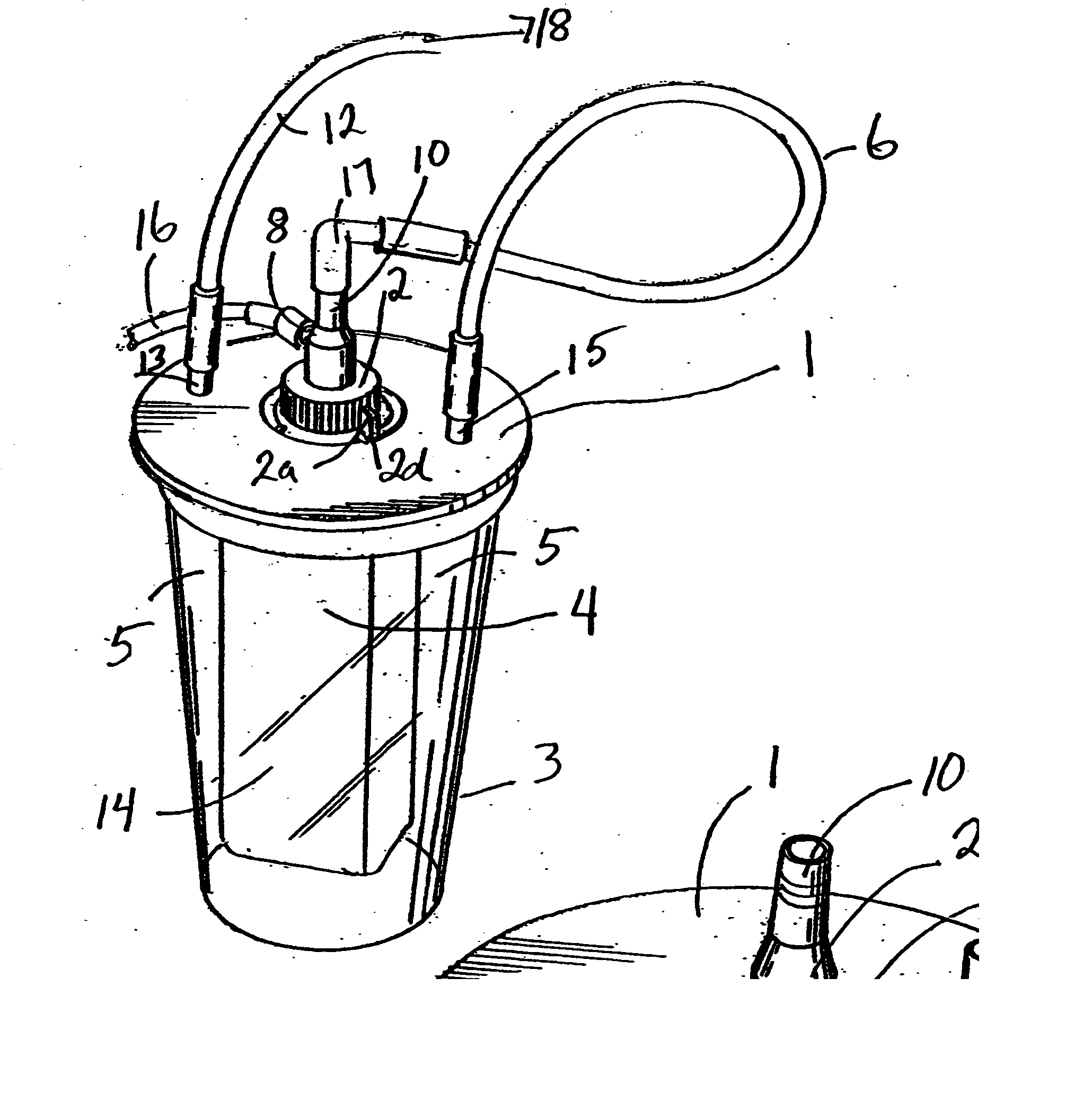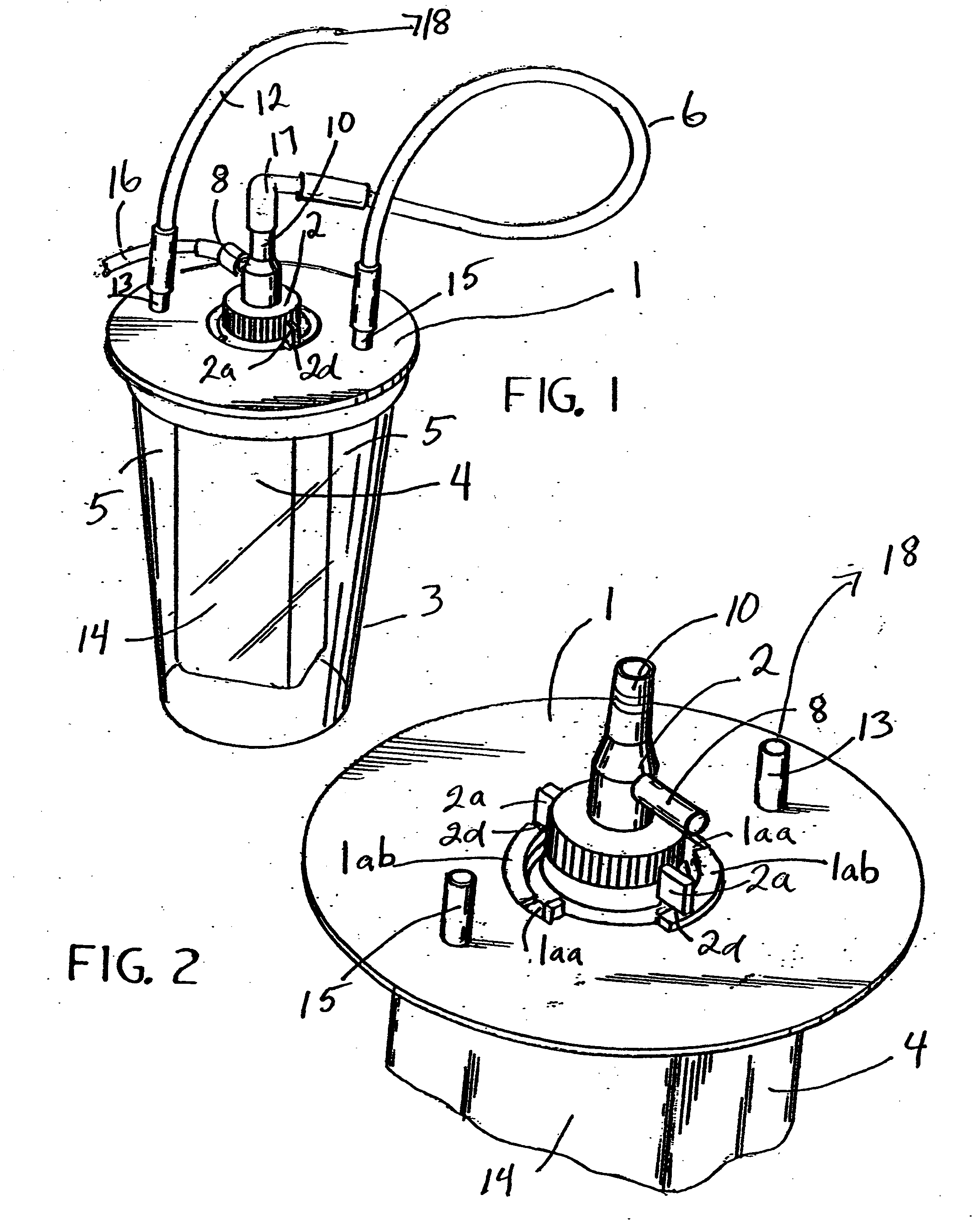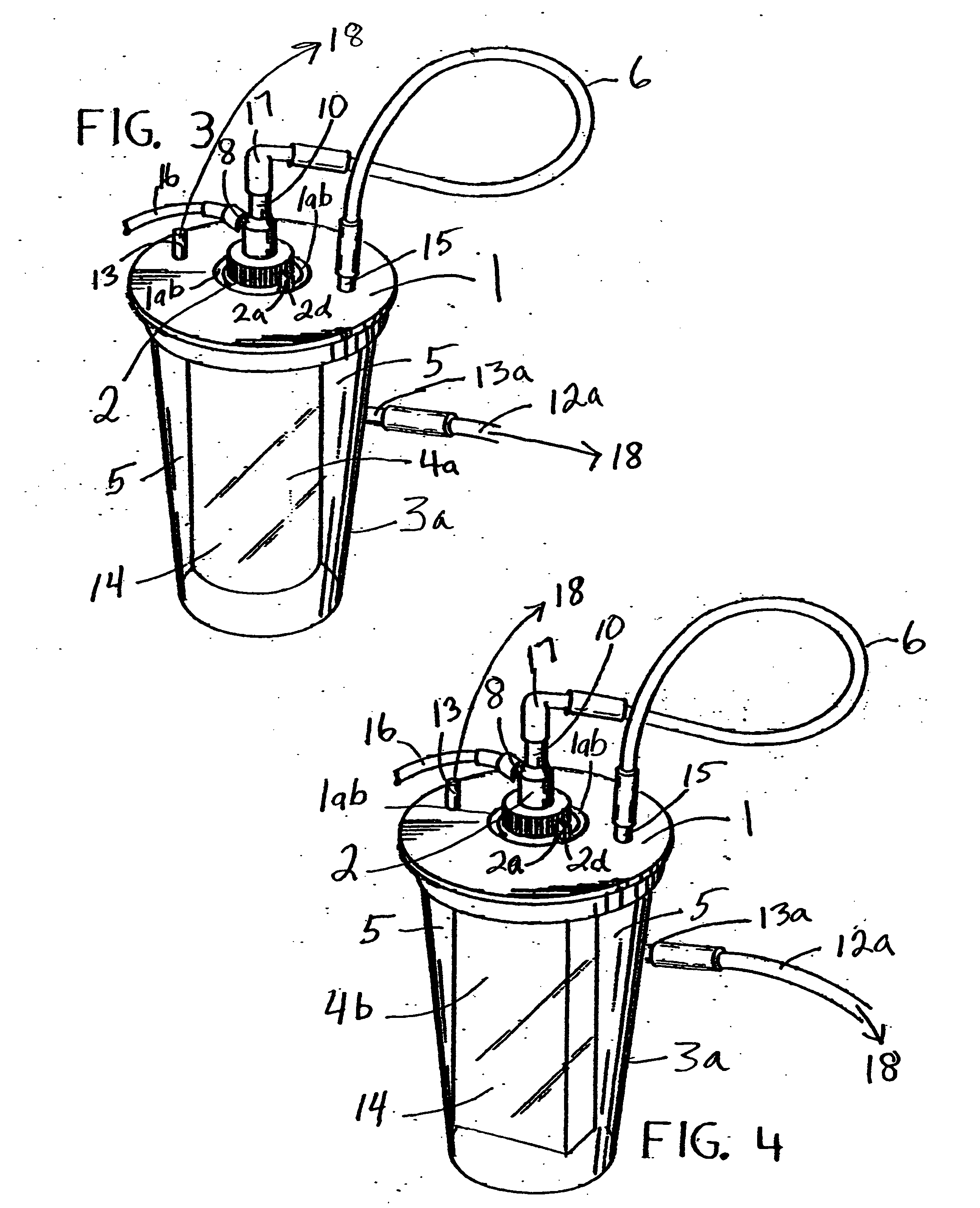Method and apparatus for converting supplies and reducing waste
a technology of waste canisters and supplies, applied in the field of waste canister systems, can solve the problems of inconvenient use of large equipment, weight disadvantage of 5,000, 10,000 and 15,000 cubic centimeter containers, cross contamination in any system, etc., and achieve the effect of reducing the amount of material waste, reducing the internal distribution, and reducing was
- Summary
- Abstract
- Description
- Claims
- Application Information
AI Technical Summary
Benefits of technology
Problems solved by technology
Method used
Image
Examples
embodiment 1
[0009] FIG. 2 is a partial top perspective of a pour bottle coupled to a bottle cap and connected to canister lid
[0010] FIG. 3 is a top perspective view of a plastic pour bottle disposed within a surgical suction / vacuum canister system that has a side vacuum draw port.
[0011] FIG. 4 is a top perspective view of a plastic pour bottle disposed within a surgical suction / vacuum canister system as a receptacle for the collection of surgical material waste deposits and the suction canister housing body has a side vacuum / suction draw port.
[0012] FIG. 5 is a partial side elevational view of a plastic pour bottle and neck.
[0013] FIG. 6 is an exploded side elevational view of a plastic pour bottle, a bottle vacuum pressure exchange cap and a partial side elevation view of lid embodiment 1.
[0014] FIG. 7 is a partial cross section view of a plastic pour bottle disposed as a receptacle for receiving deposits of surgical material waste connected to a vacuum transfer cap which is in turn connected ...
embodiment 2
[0024] FIG. 14 is a partial side elevation of a surgical suction canister lid embodiment 2 connected to a plastic pour bottle disposed therewith as a receptacle for collecting surgical suction material waste deposits through throat / aperture vacuum exchange plug 7.
[0025] FIG. 15 is a partial cross sectional view of a portion of a plastic pour bottle neck interposed between a throat / aperture plug and a surgical suction canister lid embodiment 2 and disposed therewith as a receptacle for surgical suction waste material via means of throat / aperture plug 7.
[0026] FIG. 16 is a partial cross section of surgical suction canister lid base 1a1 for adaptability to several sizes of suction canister body / housings.
[0027] FIG. 17 is a cross section view of throat / aperture force exchange plug 7.
[0028] FIG. 17a is a partial cross section view of surgical canister lid embodiment 2 coupled to the outer contour of a plastic pour bottle neck having the bottle disposed therewith to receive throat apertur...
second embodiment
[0071] Turning to FIG. 21. FIG. 21 shows material composite conduits of FIG. 19 and FIG. 20 as attached to in-draw connector 9 of a second embodiment throat / aperture plug 7a. It is also understood that the in-draw conduit composite of suction tip 19, suction tubing 16 and connector 9 may be permanently joined, or previously releasably connected as an integral material in-draw conduit.
[0072] Turning to FIG. 22. FIG. 22 shows a third embodiment throat / aperture plug 7b with out draw line filter 35, out-draw connector 11, outline filter space 36, in-draw connector 9, suction tubing connection 16 and material deposit spout 9a. It is understood that these components may be permanently connected to third throat / aperture embodiment 7b or they may be releasable connectable to throat / aperture embodiment 7b.
PUM
| Property | Measurement | Unit |
|---|---|---|
| pressures | aaaaa | aaaaa |
| thick | aaaaa | aaaaa |
| force | aaaaa | aaaaa |
Abstract
Description
Claims
Application Information
 Login to View More
Login to View More - R&D
- Intellectual Property
- Life Sciences
- Materials
- Tech Scout
- Unparalleled Data Quality
- Higher Quality Content
- 60% Fewer Hallucinations
Browse by: Latest US Patents, China's latest patents, Technical Efficacy Thesaurus, Application Domain, Technology Topic, Popular Technical Reports.
© 2025 PatSnap. All rights reserved.Legal|Privacy policy|Modern Slavery Act Transparency Statement|Sitemap|About US| Contact US: help@patsnap.com



